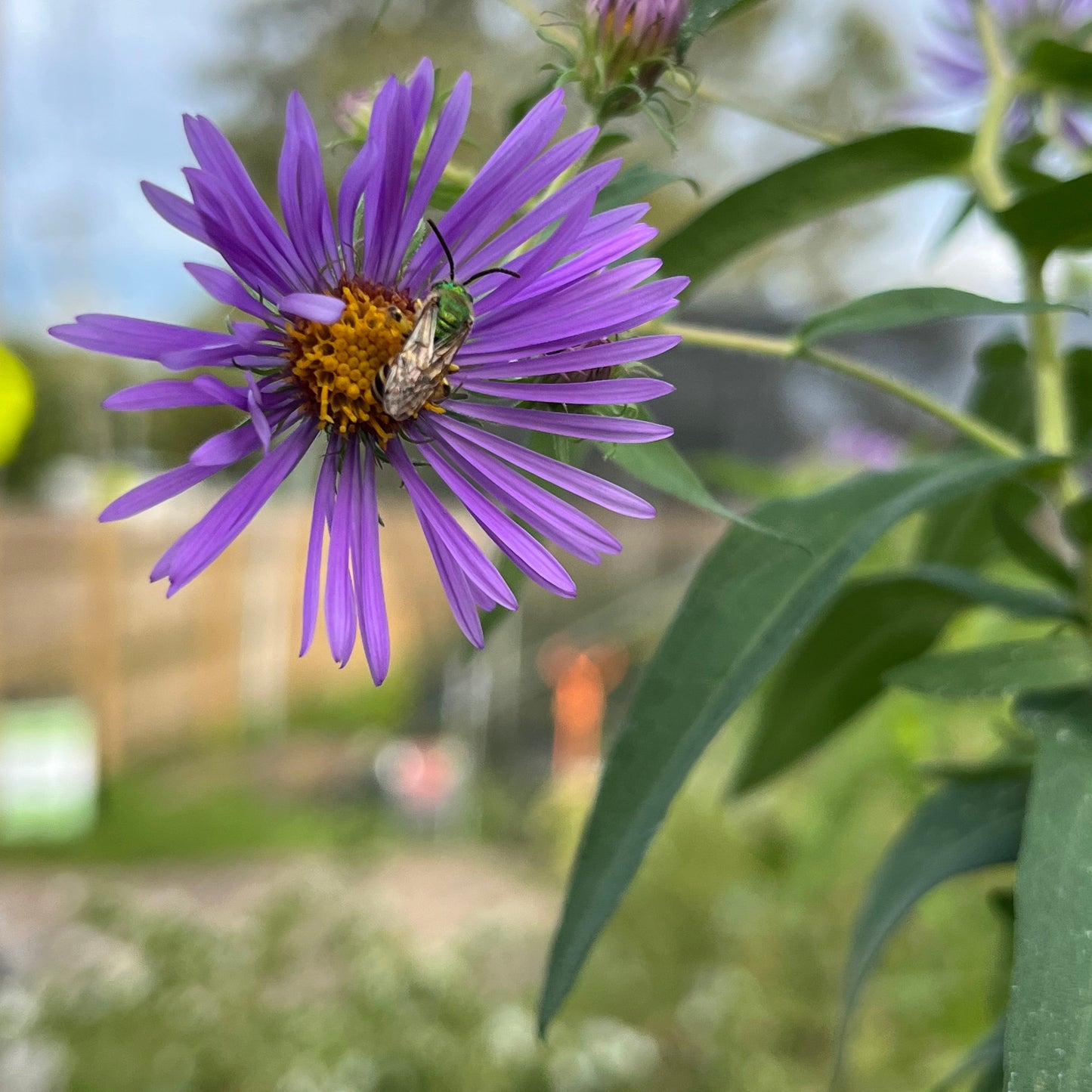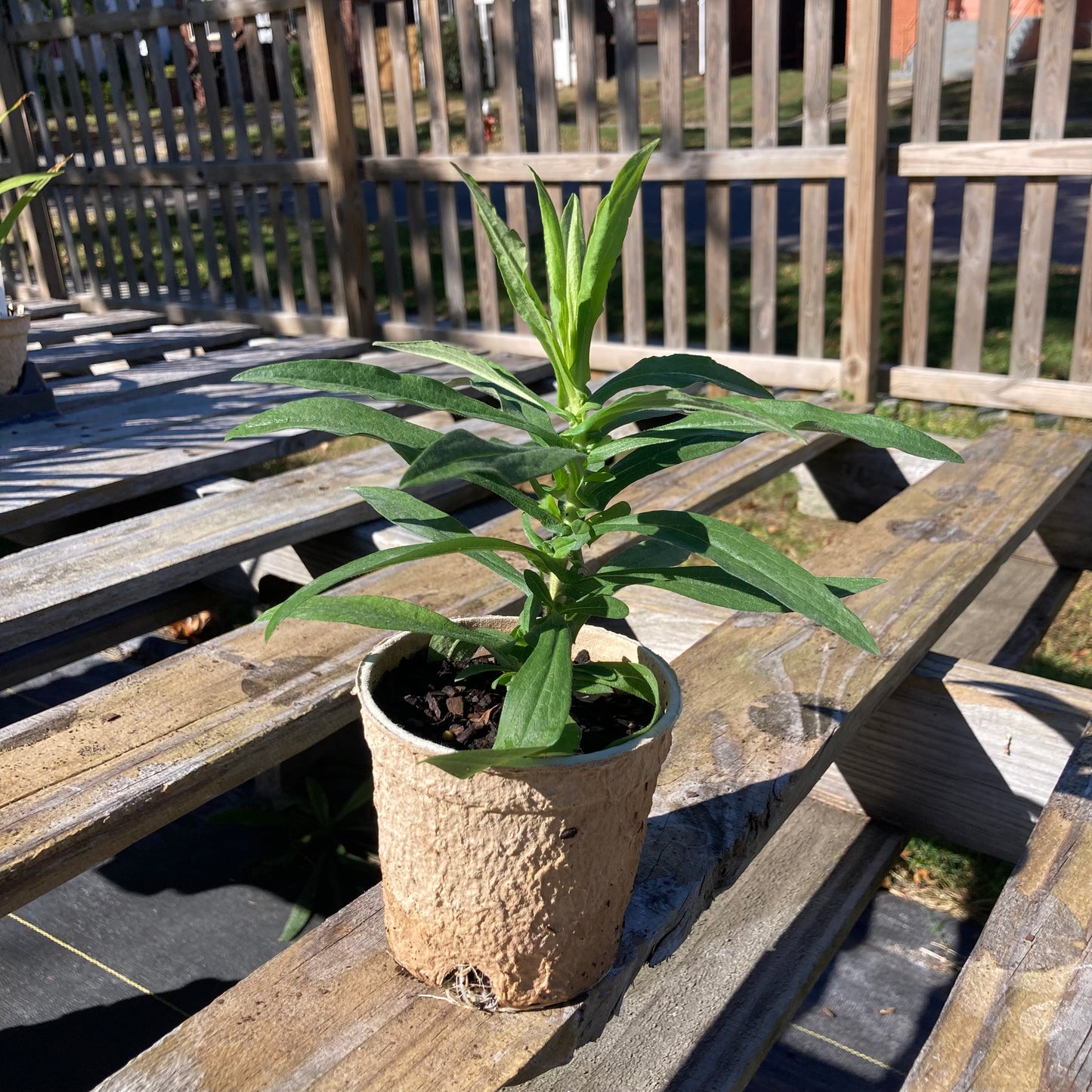New England aster
Symphyotrichum novae-angliae
Symphyotrichum novae-angliae
Couldn't load pickup availability
Sun/shade: Full sun to part shade
Soil moisture: Medium to wet
Height: 3-4'
Flowering period: September
Deer resistance: Medium
One of the meadow’s great color motifs can be achieved with this singular wildflower, whose golden-yellow discs and bold purple rays throw subtlety to the autumn winds. Monarchs and other butterflies are drawn to the plant’s flashy flowerheads, each of which offers an easy landing zone and multiple opportunities to probe for nectar. Green metallic sweat bees are also frequent visitors, adding to an already colorful scene.
An Ohio native that can be found in meadows and marshy areas as well as along roadsides, New England aster grows best under full sun and in soils of moderately wet to average moisture. The plant’s fairly broad moisture tolerance makes it a great choice for a rain garden, which will typically fluctuate from wet to rather dry. New England aster is one of the showiest autumn bloomers and it can be a fine focal point for both prairie-style and more orderly gardens.
As the growing season progresses, New England aster’s lower leaves often turn brown, and this can be handled in a couple ways. Trimming the plant to half its height prior to mid-July will cause it to be shorter and shrubbier, and any dried foliage will be less conspicuous. This will also make the plant less likely to lean over later in the season. Planting a shorter plant in front of New England aster will also serve to conceal New England aster’s lower leaves. Mountain mints and early goldenrod work well in this role.
New England aster spreads slowly via rhizomes to form a patch of plants, but it can spread quite rapidly via seed. Spreading by seed is not an issue in gardens that are fully occupied by vegetation, but it can be problematic in areas of bare soil and to a lesser extent in mulched beds. Removing New England aster’s faded flowerheads will prevent seed formation, allowing one to enjoy the plant’s beauty and pollinator value without the headache of having to pull unwanted seedlings the following year.
Photo 1 by Ashley Keesling. Photo 2 by Alyssa Zearley.





